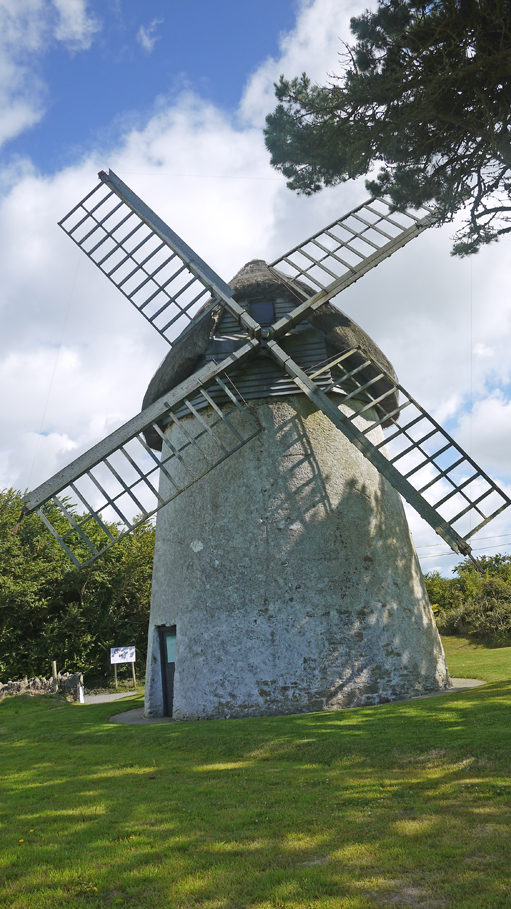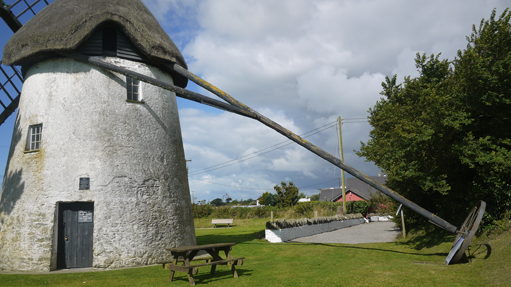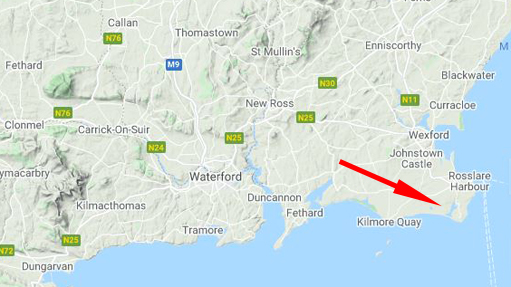

Tacumshane Windmill
Tacumshane windmill is located in Tacumshane in the townland of Fence, Co. Wexford, approximately seven miles South of Rosslare. Towards the end of the 19th century there were an estimated thirteen wind-driven corn Mills along the Wexford coast but Tacumshane windmill is the only remaining mill complete with machinery. The mill is situated in a cornfield, accessed by a laneway adjacent to Meyler’s Millhouse Bar and Restaurant.
This type of mill was an alternative to the watermill, which required access to a fast flowing river in order to grind grain into flour. The use of windmills was the Norman way of producing more food locally. In medieval times, the flat and windy landscape of South Wexford was dotted with these unusual structures.
The mill was in continuous use until 1908 when it was re thatched by Richard Sinnott. In 1930 the mill was acquired by Gerald Murphy, having fallen into disrepair. At this point the structure was re roofed, and the damaged parts of the iron machinery were replaced. The mill continued to operate until 1936 when a diesel engine was installed in the adjacent grain store where it powered a pair of small millstones until 1961. The last Miller to operate in Tacumshane was Michael power of Sigginstown town and Hilltown.
MILL TOWER
Circular tower constructed from limestone rubble, featuring a pair of opposing timber doors at ground level and single timber windows at first and second floor level. The tower has a limewash finish externally and internally. A flagstone path surrounds the base of the tower.

CAP
The roof, or cap, is a conical framework of rafters and cross-battens, clad in a layer of thatch. A series of wrought-iron strips, or shoes, along a wooden curb connected to the base of the frame bear on a metal curb that is fixed to the tower masonry. This mechanism requires greasing to function effectively. Eight truck-wheels are located on the perimeter of the framework, bearing laterally on the wooden curb and allowing the cap to rotate.
WINDSHAFT
A weather-boarded roof dormer houses the windshaft which bears on a carriage of heavy beams that turns with the cap. The cast-iron windshaft at Tachumshane dates from 1865, and was taken from Ballylane Mill.
SAILS
The sails, also known as the craps or wings, are of a type known as ‘the common sail’. The cap can be rotated to allow the sails to be brought into the wind. Each sail consists of a framework of evenly spaced bars, mortised through a primary shaft or whip and held in position by wooden strips or hemlaths, running the length of the sail. Originally clad in linen sailcloth, the sails are connected to the windshaft via cast-iron fittings.
BOWSPRIT
A timber bowsprit projects outwards from the windshaft, ensuring additional strength and stability in high winds. The outer ends of the central sail shafts or whips are tied together with wire braces connected to the bowsprit.
TAIL-POLE & CARTWHEEL
The sails were positioned facing into the wind by means of a tailpole, a large square timber pole extending from the cap framework and connected to a cartwheel on the ground. This pole is braced by two smaller timber struts spanning either side of the cap framework. This tail pole could be pulled manually, or by a horse with the use of a trace. Originally the cartwheel could make a full circuit of the tower, though this is no longer possible due to changes in landscaping.

Click or Tap HERE to return to Beyond Clonmel page.
Select Home from the menu to return to the Home Page.